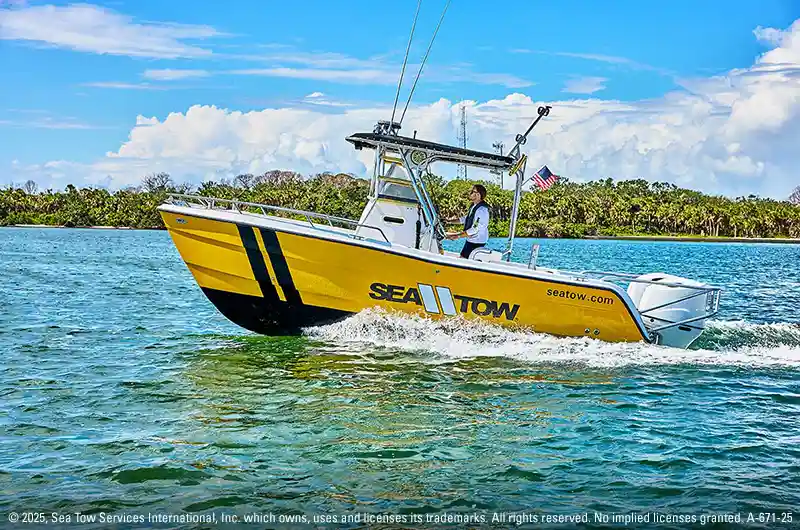
The hull is the watertight body of any boat or ship. It gives the vessel buoyancy, strength, and shape, and every other part of the boat—from decks to engines—rests on it. Hulls come in two basic performance styles (displacement and planing) and several common shapes (flat-bottom, round-bottom, V-bottom, multi-hull, pontoon, and more). Knowing how your hull works and how to keep it healthy sets the foundation for safe and enjoyable boating.
What the Hull Does
A boat’s hull has three critical jobs:
- Keeps Water Out & Air In: The hull is the main barrier between you and the water. If it leaks, you sink.
- Provides Buoyancy & Stability: By displacing water equal to its own weight, the hull keeps the vessel afloat and upright.
- Takes the Beating So You Don’t Have To: It absorbs wave impacts, resists corrosion, and protects everything inside from passengers to gear.
Think of the hull as your boat’s “first line of defense.” If it’s sound, your day on the water starts with confidence.
Two Ways a Hull Moves Through Water
1. Displacement Hulls
- How they work: Push water aside and stay partially submerged.
- Common on: Sailboats, trawlers, large cruise ships.
- Ride feel: Smooth and steady, but slower.
- Fuel note: More efficient at low-to-moderate speeds.
2. Planing Hulls
- How they work: Climb up and skim on top of the water once they reach speed.
- Common on: Center-console fishing boats, PWCs, wake boats.
- Ride feel: Fast and agile, but can pound in chop.
- Fuel note: Thirstier at low speeds; efficient only when fully on plane.
Why it matters: Knowing which style you own helps you set realistic cruising speeds, fuel budgets, and maintenance expectations.
Popular Hull Shapes and What They Do Best
| Hull Shape | Best For | Key Benefit | Trade-Off |
|---|---|---|---|
| Flat-Bottom | Lakes, calm rivers | Very stable; skinny draft | Pounds in chop |
| Round-Bottom | Canoes, displacement cruisers | Glides easily; low drag | Tippy at rest |
| V-Bottom (Deep-V) | Coastal powerboats | Smooth ride in waves | Needs more power |
| Tri-Hull / Tunnel | Small runabouts | Lots of deck space | Slaps in chop |
| Pontoon (Multi-Tube) | Party barges | Massive stability & payload | Limited rough-water ability |
| Catamaran / Multi-Hull | Offshore fishing, ferries | Superb stability; shallow draft | Larger turns, higher cost |
Hull Materials: Pros, Cons, and Care Tips
| Material | Strengths | Watch-Outs | Basic Care |
|---|---|---|---|
| Fiberglass (GRP) | Light, low-maintenance, shapes easily | Blisters if moisture penetrates | Wash salt, wax seasonally |
| Aluminum | Tough, impact-resistant, trailer-friendly | Galvanic corrosion | Inspect welds, isolate metals |
| Steel | Extreme strength, weldable repairs | Rust | Fresh-water rinse, paint systems |
| Wood | Classic looks, natural flex | Rot, high upkeep | Keep dry, re-coat varnish/paint |
| Composite Cores | Very light, stiff | Core damage can soak | Seal fittings, survey regularly |
Tip: No matter the material, a five-minute freshwater rinse after every trip slows corrosion and prolongs hull life.
Five-Step Hull Health Check for Every Launch
Walk the Waterline
Start at the bow and circle the boat. Look for cracks, blisters, or loose hardware. Early signs here save headaches offshore.
Check Thru-Hull Fittings
Push on seacocks and strainers. They should feel firm. A failed thru-hull is a fast track to a sinking ship.
Tap & Listen
Use a plastic screwdriver handle. Crisp “thunk” = solid. Dull “thud” can mean delamination.
Verify Drain Plugs
Sounds obvious—until it isn’t. Make “plug in, drain out” your launch mantra.
Confirm Bilge Pump & Alarms
Turn on the float switch; pump should fire instantly. High-water alarms save boats (and bank accounts).
If you discover damage, call a pro for guidance before leaving the ramp.
When to Call in the Pros
| Symptom | Likely Cause | DIY? | Call a Pro? |
|---|---|---|---|
| Continuous seepage around a thru-hull | Bad bedding / corroded fitting | Small drip, maybe | Yes, haul-out |
| Spider-cracks radiating from strut | Structural stress | No | Yes, surveyor |
| Blisters bigger than a quarter | Osmosis in fiberglass | Possible but tricky | Yes |
| Rust streaks on steel hull | Coating failure | Small spots | Yes, sandblast/coat |
| Persistent list to one side | Water in foam core | No | Yes, urgent |
Remember: The cheapest repair is one done right the first time.
Bringing It All Together
Your hull is more than the part you stand on—it’s the heartbeat of your boat. Understanding its style, shape, and needs empowers you to:
- Plan smarter trips (fuel, speed, comfort)
- Spot small problems before they grow
- Protect passengers, gear, and wallet
And if the unexpected does happen? A quick call to Sea Tow’s 24/7 team connects you to Coast Guard–licensed captains ready to lend a hand—so a minor hull hiccup never ruins a great day on the water.
Lead with knowledge, back it up with preparation, and enjoy boating with confidence.
